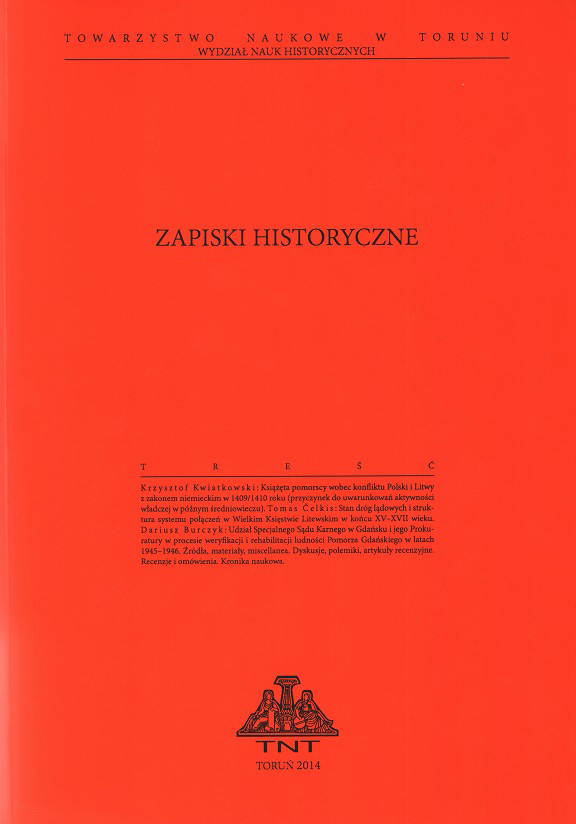Natura na planie miasta
Nature on the Town Plan
Experiences From the Reconstruction of the Urban Planning of Dolsk of the Turn of the 16th and 17th Centuries
Author(s): Michał SłomskiSubject(s): Historical Geography, Maps / Cartography, Economic history, Social history, 16th Century, 17th Century
Published by: Towarzystwo Naukowe w Toruniu
Keywords: small towns; historical geography; cartography; gardens; early modern period; Polish Historical Atlas
Summary/Abstract: The article concerns the presence of nature in pre-industrial towns. I address here the problems I encountered when recreating the urban layout of Dolsk, an averagesized town in Greater Poland belonging to the bishops of Poznan in the Old Polish period, at the turn of the 16th and 17th centuries. This problem concerned showing the socio-economic character of the city. The reproduction constitutes part of Greater Poland’s volume of the series of the Historical Atlas of Poland. The search for the presence of nature in cities was based on a query in written sources from the first half of the 17th century and on the basis of the oldest known and preserved city map from the end of the 18th century. The reference to natural elements in Dolsk is associated with the presence of home gardens, which constitute a kind of natural arrangement. Most often they appear when describing a real estate that was the subject of purchase/sale transactions between burghers of Dolsk or when loans were secured on a real estate. Gardens were located on plots, which constituted the basic unit of the ownership division of the urban space. However, they were not always mentioned in the descriptions of transactions. Most often they appeared at the houses that were built on plots limited from the back by the lakes surrounding Dolsk or passed into suburban areas. However, also in the case of plots that bordered with other plots from the back, one may find information about the presence of a garden on such a plot. The presence of gardens at the back of the plots in Dolsk was also registered on the oldest preserved city map of 1794–1796. Both this fact and the forwarding of elements of nature inside town walls on plans of perspective towns from the early modern period means that marking gardens on the reconstruction of the spatial arrangement seems necessary, especially in the case of towns of the size and character of Dolsk. This makes it necessary to reflect upon the methodology of creating historical maps of old towns. The simplest solution would be to create a generalized, simplified visualization of the urban space based on data taken from the oldest town plan, but not merely from a simple redrawing of the border between the residential-economic zone and the garden zone. However, not being able to mark these borders precisely on the basis of data from written sources from the 17th century, one should adopt a conventional method of marking these zones. However, this requires further reflection on the methodological concepts of modern cartography and their use to create historical maps showing the reconstruction of spatial systems of towns in the pre-industrial period. It seems that further work on a similar way of marking the space of urban plots in average-size and small towns will allow to develop a model of cartographic presentation that will better reflect the character of the space of towns such as Dolsk.
Journal: Zapiski Historyczne
- Issue Year: 84/2019
- Issue No: 3
- Page Range: 169-204
- Page Count: 36
- Language: Polish

